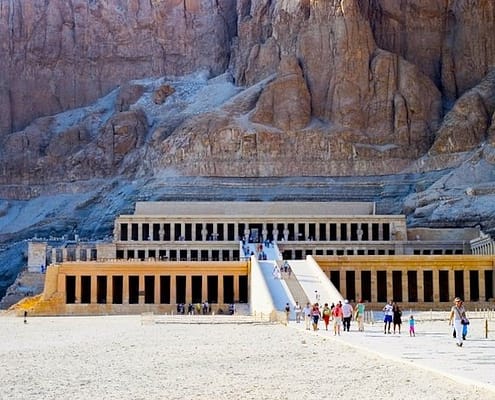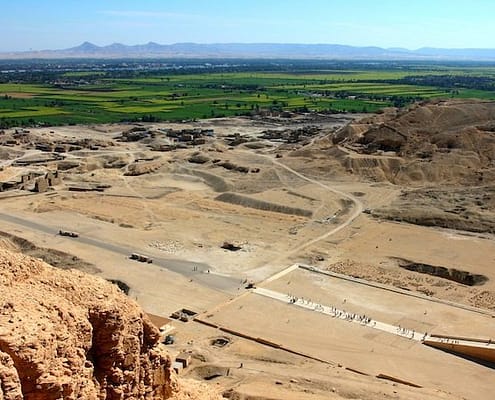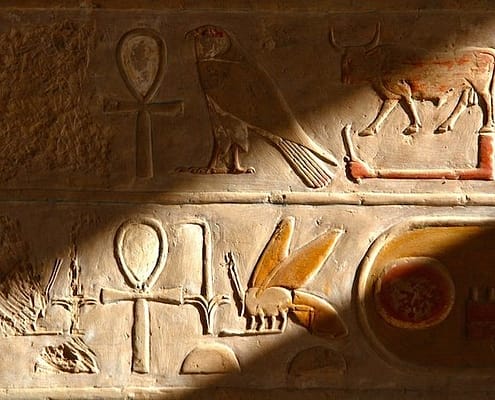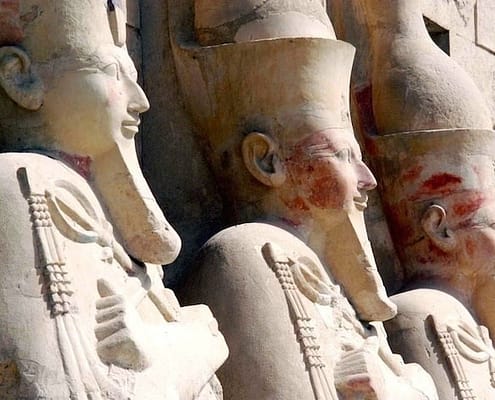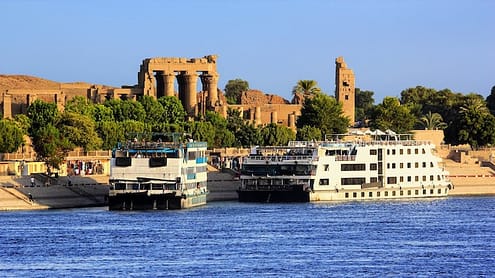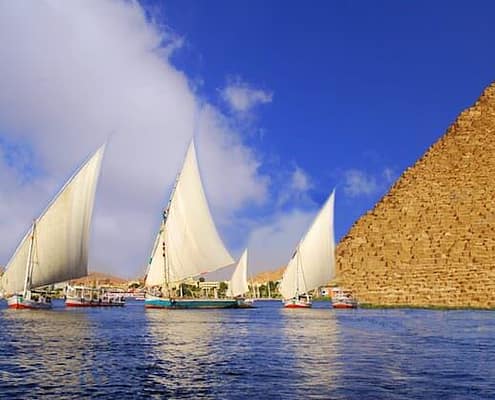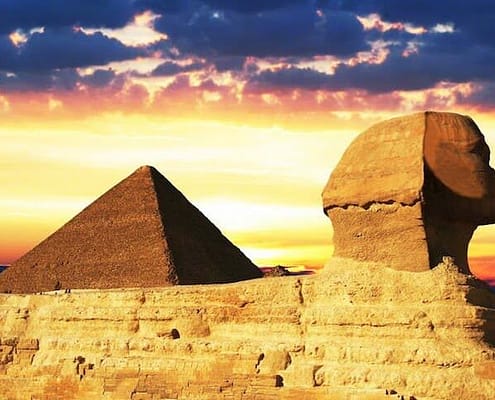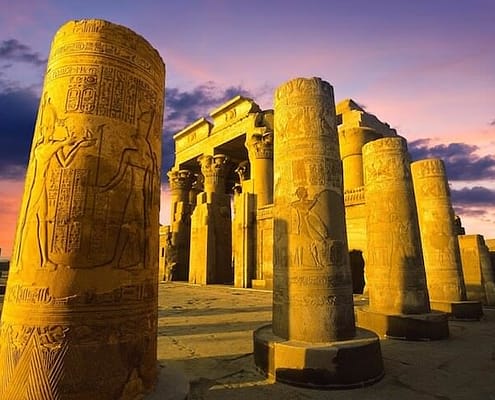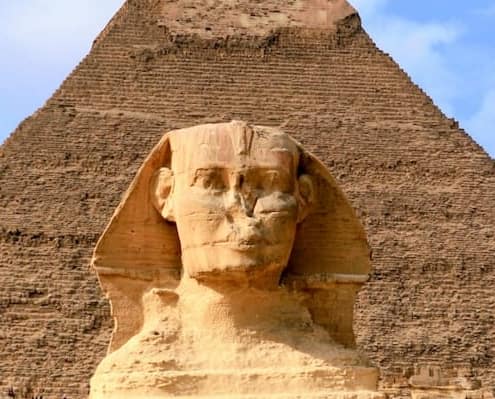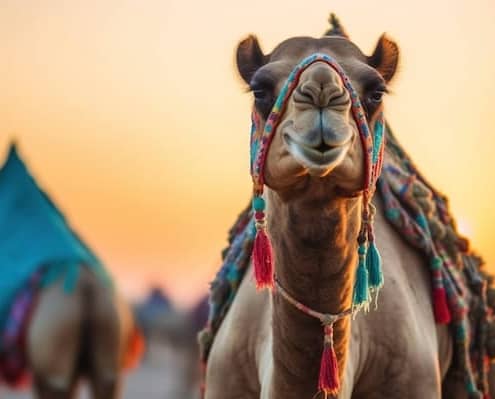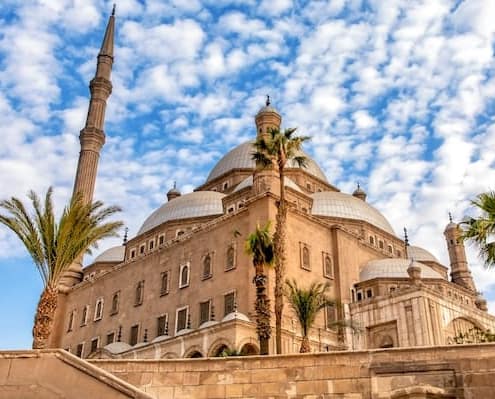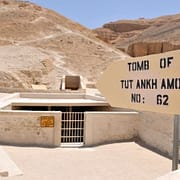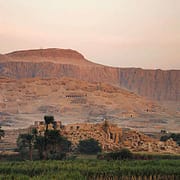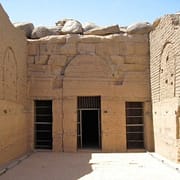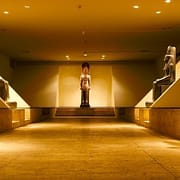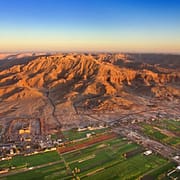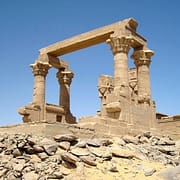Hatshepsut Temple: A Window into the Reign of One of Egypt’s Most Powerful Female Rulers
Queen Hatshepsut Temple, also known as Deir el-Bahri, is a majestic ancient Egyptian mortuary temple and a breathtaking example of ancient Egyptian architecture located on the west bank of the Nile River in Luxor. It was built for Queen Hatshepsut, the true Egyptian female pharaoh of Egypt, during the 15th century BC. The temple is renowned for its unique architecture, beautiful reliefs, and stunning location.
A visit to this temple is a must for anyone who wants to explore the ancient history and culture of Egypt. In this article, we will delve deeper into the history and significance of the Hatshepsut Temple.
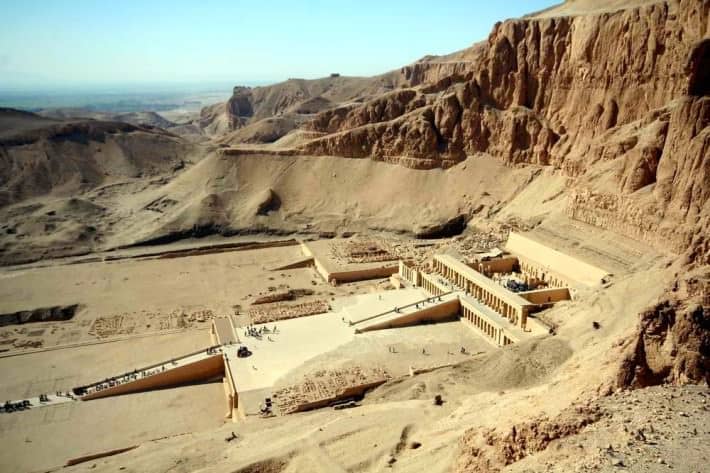
Queen Hatshepsut Temple – Built in honor of the longest living female Pharaoh. Luxor, Egypt.
Who Was Queen Hatshepsut
Hatshepsut was the daughter of Pharaoh Thutmose the 1st and later married her half brother, Thutmose II. When Thutmose II died, their infant son, Tuthmosis III, was too young to rule, so Hatshepsut ruled as a regent on his behalf. In reality, however, she took over the thrown. Many depictions show her wearing royal regalia, including the royal head covering, and even a false beard.
After having ruled Ancient Egypt for around 15 years, her son, Tuthmosis III took control of the thrown and essentially wanted to erase all signs of her reign. Apart from some inscriptions and artwork in her mortuary temple, Thutmose III almost succeeded at erasing Pharaoh Hatshepsut from Egyptian history.
One of the most Breathtaking Temples ever Built
The Temple of Hatshepsut is without question one of the most striking ancient attractions in all of Egypt. In fact, it is one of only a handful of Luxor tourist attractions that are considered to be “incomparable monuments of Egypt” and many historians also refer to it as being one of the Wonders of Ancient Egypt. Our 5-Star Nile River cruises allow you to visit this temple, along with many other incredible sites, all while traveling in the lap of luxury.
Visitors to Luxor in upper Egypt will find this magnificent temple located below the steep cliffs at Deir El Bahari, just a short distance away from the infamous Valley of the Kings, on the West Bank of the Nile River near modern-day Luxor. From the moment the temple comes into view, it becomes very obvious that Pharaoh Hatshepsut, an 18th dynasty pharaoh, wanted a temple that was well and truly fit for a queen.
A Brief History Of Hatshepsut Temple
Queen Hatshepsut ruled Egypt during the 18th dynasty, and she ruled the country longer than any other indigenous female pharaoh. She was also a very successful pharaoh that preferred peace rather than warfare. While she did see some warfare during the early stages of her rule, eventually her reign ushered in an era of extended piece. She also re-established trading relationships and increased the wealth of Egypt, allowing the Egypt to introduce a higher caliber of architecture, the likes of which remained incomparable worldwide for hundreds of years.
During her reign, Queen Hatshepsut assigned a woman by the name Senemut to create what would become one of Egypt’s greatest temples ever built. Senemut was officially the queen’s royal steward and architect of the temple, and according to some theorists, she might also have been Hatshepsut’s lover.
Hatshepsut temple was essentially constructed for Hatshepsut’s post-death worship, but also for the glory of Amen-Ra, an Egyptian god. The temple is built spread out over a series of colonnaded terraces that are accessible via a central ramp, and in the past the entire area was surrounded by landscaped gardens and extravagant statues and other decorations.
Exotic Trees and Lush Gardens
Today, Queen Hatshepsut’s mortuary complex is surrounded by a dry desert landscape. However, this was not always the case. During her reign, Hatshepsut organized a “glorious expedition” to the land of Punt. which saw boats arriving back with lots of exotic spices, plants and trees.
At one point in time, the temple was surrounded by exotic trees and lush green gardens. Anyone arriving at the temple would have been greeted by a divine fragrance and beautiful landscaped gardens, with the massive cliffs of Deir Al-Bahari in the background, with the mortuary temple of Pharaoh Hatshepsut and its elaborate ramp taking center stage
Visiting Queen Hatshepsut’s Temple
While visitors to Hatshepsut temple today won’t see finely manicured gardens and the like, they will still see a pristine ancient temple that has clearly managed to stand the test of time. Most ornaments and other decorations have long since been moved into museums, but the temple is still home to many fascinating antiquities.
Visitors that are able to visit the temple on the 21st or 22nd of December will be in for a real treat, particularly if they get to the temple early enough to see the sunrise. Every year, these dates represent the winter solstice, and Queen Hatshepsut’s architect aligned the temple in such a way so as to take advantage of this.
During the winter solstice, sunlight is able to penetrate the inside of the inner chapel, falling first on the chapel’s rear wall, and then moving across slowly to illuminate a large statue of Osiris. There is also an additional light box that allows a square of light to follow the temple’s central axis. As it travels along the axis, it first illuminates a statue of the god Amen-Ra, then a kneeling statue of King Thutmose III, and then finally a statue of Hapi the Nile god.
A Queen Buried in the Valley of Kings
In 1902, Howard Carter, a British archaeologist, discover the tomb of Queen Hatshepsut. However, it was only when he started to study the tomb properly in 1920 that he discovered it contained two sarcophagi, one belonging to Hatshepsut and the other belonging to her father. Unfortunately, both were empty.
Some years later, Carter turned his focus to a tomb which is now known as KV60. Inside he discovered two coffins belonging to women. One clearly belonged to Hatshepsut’s “wet nurse”, Sitra-In. However, because the tomb was not considered to be a royay tomb, it received almost no attention. It was only in 1989 that an archaeologist by the name of Donald Ryan decided to reopen the tomb.
The sarcophagus of the wet nurse was sent to Cairo, while the other was left behind. Several years later, another archaeologist decided to start investigating the mystery of Hatshepsut’s missing mummy. The result – the second mummy in KV60 was that of Hatshepsut. This was determined thanks to CAT scan and a tooth which was discovered in a box next to her coffin.
In Summary
Unlike some other pharaohs such as Ramses II, Queen Hatshepsut is not remembered as being one of ancient Egypt’s most prominent military leaders. Instead, she is remembered fror bringing wealth to Egypt anf for greatly improving the life of Egyptian society which started with her trade expedition to the Land of Punt. While Thutmose III’s goal many have been to erasre the rule and legacy of his mother, Hatshepsut has certainly survived.
Because the temple is one of Egypt’s most famous and most visited attractions, and certainly one of the most famous attractions in Luxor, it is almost always featured in our Egypt travel packages that include spending some time in Luxor. Nearly all of our Nile cruises from Luxor to Aswan and our Nile cruises from Aswan to Luxor also include a visit to Queen Hatshepsut’s temple because it is well and truly one attraction you really don’t want to miss.
Design Your Custom Egypt Tour
Explore Egypt your way by selecting only the attractions you want to visit
Egypt Travel Information
Last Updated on March 26, 2024

